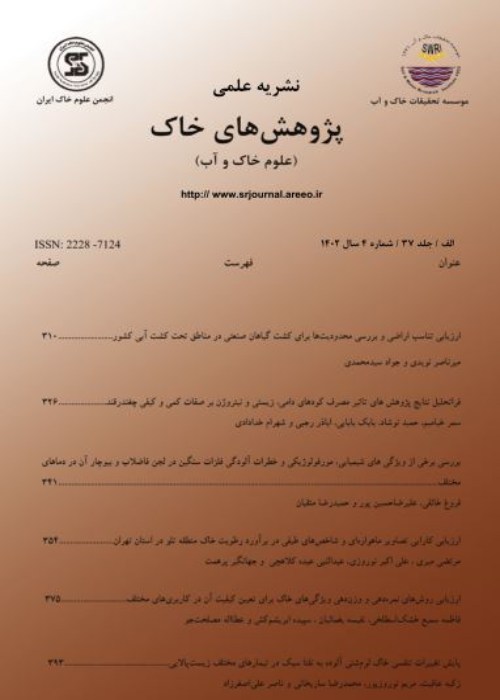Modeling Spatial Distribution of Soil Classes Using Machine Learning Algorithms in Some Parts of Zanjan Provice
Digital soil mapping (DSM), which uses machine learning (ML) algorithms and environmental covariates, is used worldwide for predicting soil properties and classes, due to being time-effective and cost-saving. This research was conducted to compare ML models and their efficiency in predicting the spatial distribution of soil subgroups in part of Zanjan Province. For this purpose, sampling was carried out through a regular pattern with 500 meters intervals, and 148 soil profile samples were randomly collected and classified. The soils of the region at the subgroup level were categorized in five classes, including Typic Calcixerepts, Typic Haploxerepts, Gypsic Haploxerepts, Typic Xerorthents, and Lithic Xerorthents. Environmental covariates included geomorphological and geological maps, digital elevation model (DEM), and remote sensing (RS), selected by principal component analysis (PCA) and expert knowledge approaches. Fifty-seven environmental variables were extracted as representatives of soil forming factors. Modeling of the soil-landscape relationship was performed using three algorithms, namely, multinomial logistic regression (MNLR), random forest (RF), and boosted regression tree (BRT) in Rstudio software. The results of evaluation metrics such as overall accuracy and Kappa index were 65% and 0.32 for the RF algorithm, 60% and 0.35 for the BRT, and 65% and 0.41 for the MNLR. Referring to the importance of environmental variables, results showed that the four factors of valley depth, LS-Factor, channel network distance, and multiple resolution ridge top flatness index (MRRTF) were the most important variables in MNLR algorithm. Also, the results of two statistics of user’s accuracy (UA) and producer’s accuracy (PA) showed that the MNLR model performed better in the spatial prediction of soil at subgroup level. Soil classes with higher frequency had higher accuracy. The results of the prediction accuracy of soil classes showed that the model prediction is more accurate for the more frequent types in the observations.
- حق عضویت دریافتی صرف حمایت از نشریات عضو و نگهداری، تکمیل و توسعه مگیران میشود.
- پرداخت حق اشتراک و دانلود مقالات اجازه بازنشر آن در سایر رسانههای چاپی و دیجیتال را به کاربر نمیدهد.



